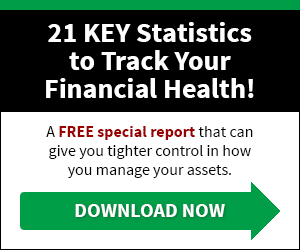Common Retirement Investment Mistakes
Only one-in-four Americans (27%) feel very confident that they will have enough money to live comfortably when they retire, according to the 2020 Retirement Confidence Survey Summary Report.1 While the number is up slightly from the 2018 survey (23%), it underscores a pervasive sense of uncertainty among those approaching retirement age.
While there is no single action that can boost the collective confidence of retirees, there are several key investment mistakes that, if avoided, can help maximize retirement savings and provide confidence to those who are entering their Golden Years.
Pitfall #1: Failing to Maximize Your Contribution
If you can afford to do so, contributing the maximum amount to your employer-sponsored retirement plan will increase the chances that you’ll reach your investment goal. The earlier you start, the better; it will allow your investments, and any potential earnings to grow on a tax-deferred basis.
Pitfall #2: Failing to Develop a Concrete Plan
Establishing clear goals that incorporate a time element (number of years until retirement) is necessary to create a relevant investment plan. Without such a plan, it is difficult to understand whether your savings will provide you with the living standard to which you’ve grown accustomed and for each year of your retirement.
Pitfall #3: Short-Term Investment Mindset
The stock market fluctuates; that’s a fact. And in the short-term they face a relatively high risk of price volatility. But in the long-term stocks have historically delivered relatively stable earnings. So selling off your holdings whenever the market takes a dip is a sure way to incur losses that impact your long-term goals.
Pitfall #4: The Quest for Perfection
Buying low and selling high is evergreen advice, but trying to time investment decisions on when the market will be at its lowest or highest is risky business, often leading to missed opportunities. As per #3 above, investing for the long-term can provide a more stable investment mindset.
Pitfall #5: Eggs All in One Basket
Some investors make the mistake of investing in just one fund or asset type, thereby subjecting it to high risk should the market impact their specific holding. Spreading your investment risk over a mix of assets can help manage potential loss during these sharp market swings. The key here is diversification to offset losses in a particular asset category.
With these pitfalls in mind, you are well-positioned to avoid the common mistakes of other investors and maximize opportunities for your retirement plan.
This material is for general information only and is not intended to provide specific advice or recommendations for any individual. There is no assurance that the views or strategies discussed are suitable for all investors or will yield positive outcomes. Investing involves risks including possible loss of principal. Past performance is no guarantee of future results.
There is no guarantee that a diversified portfolio will enhance overall returns or outperform a non-diversified portfolio. Diversification does not protect against market risk.
This material was prepared by LPL Financial, LLC.
1 https://www.ebri.org/docs/default-source/rcs/2020-rcs/2020-rcs-summary-report.pdf?sfvrsn=84bc3d2f_7







